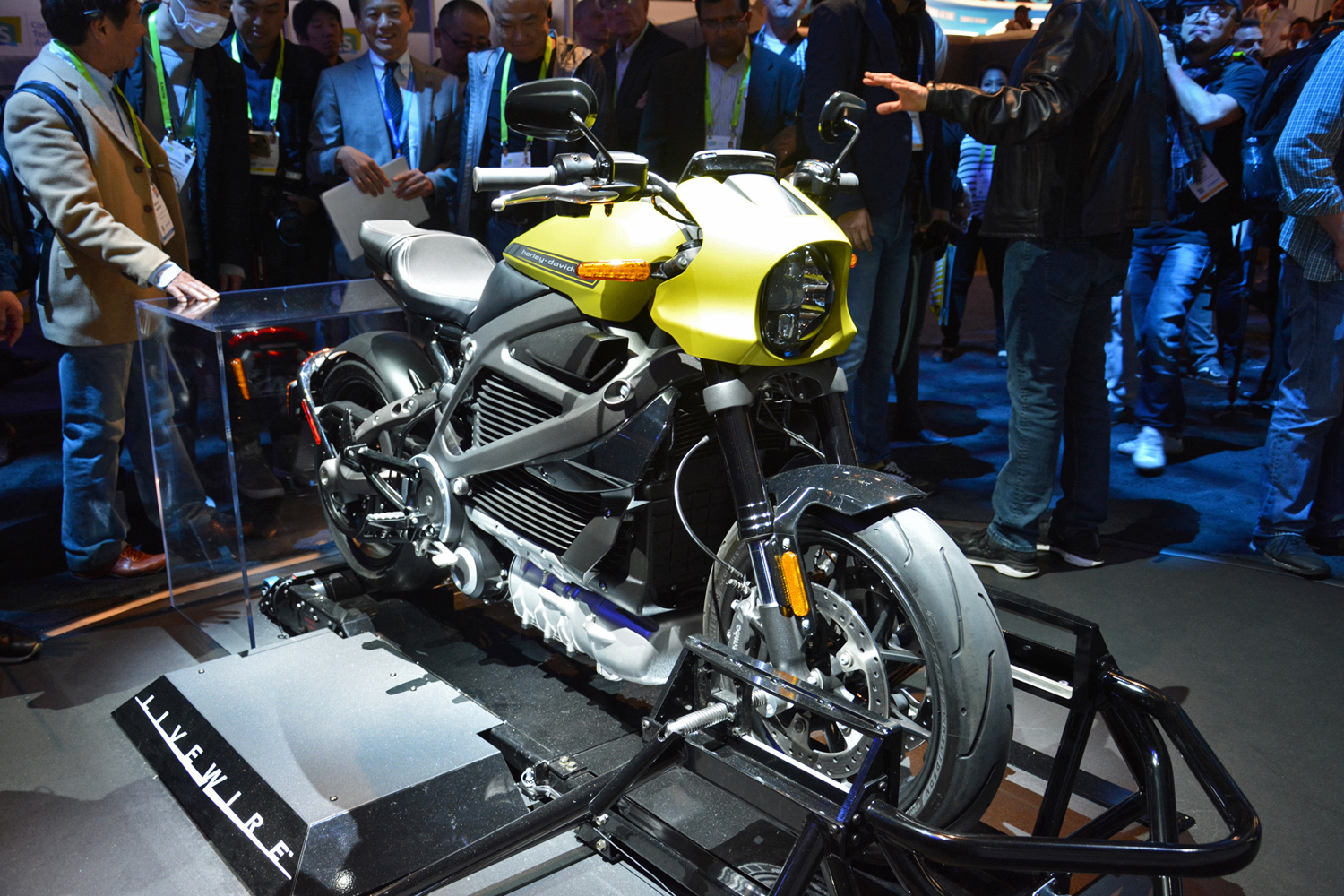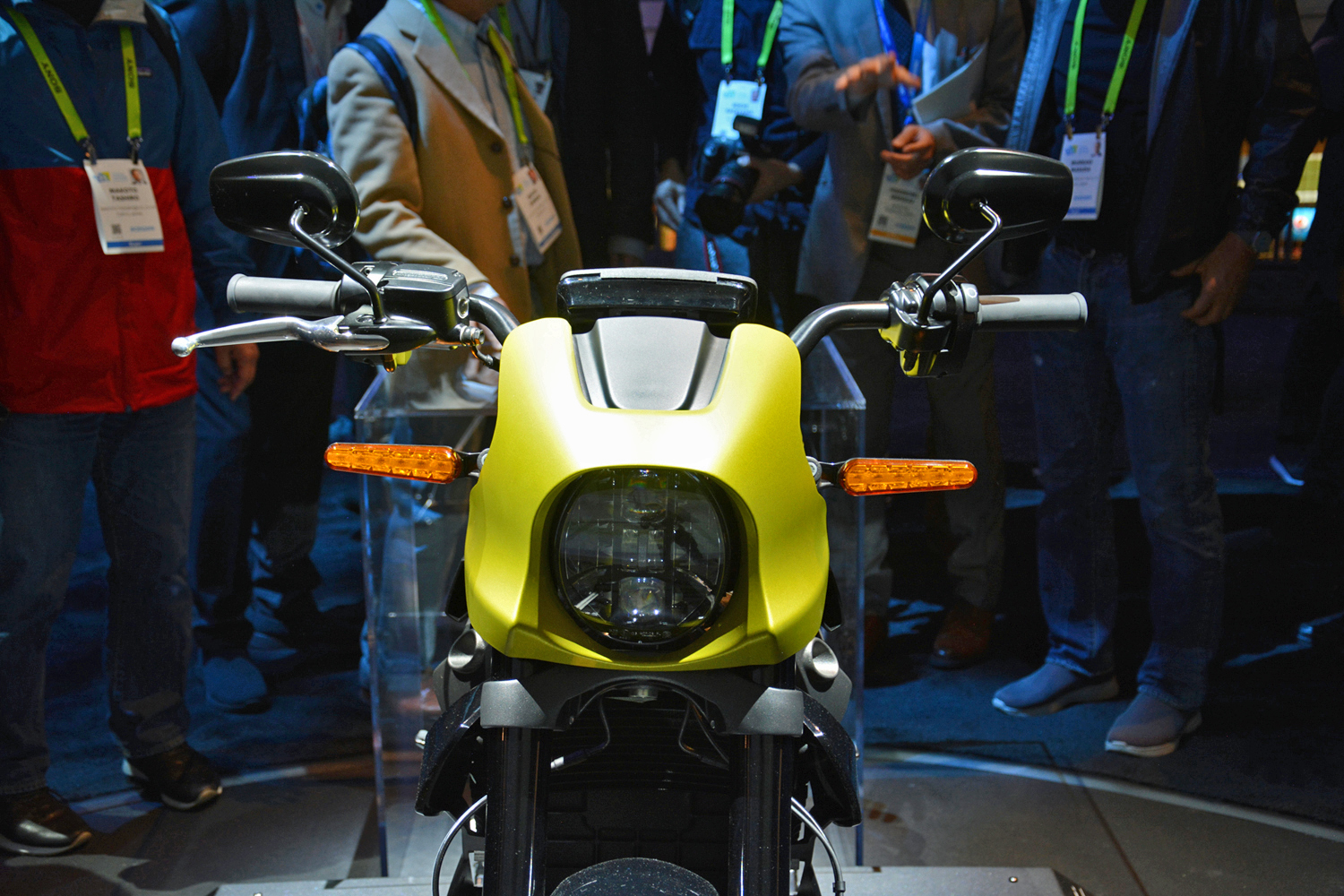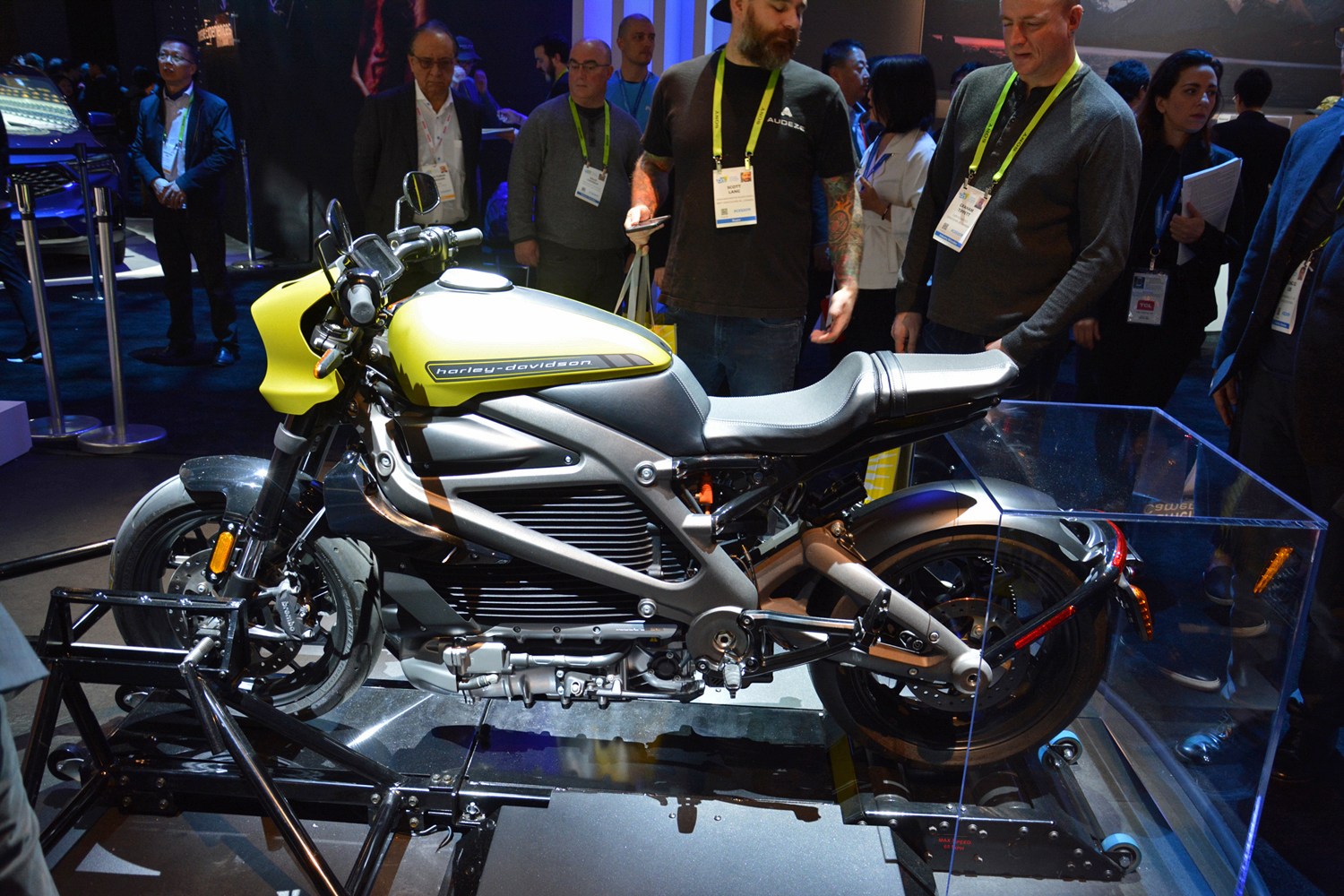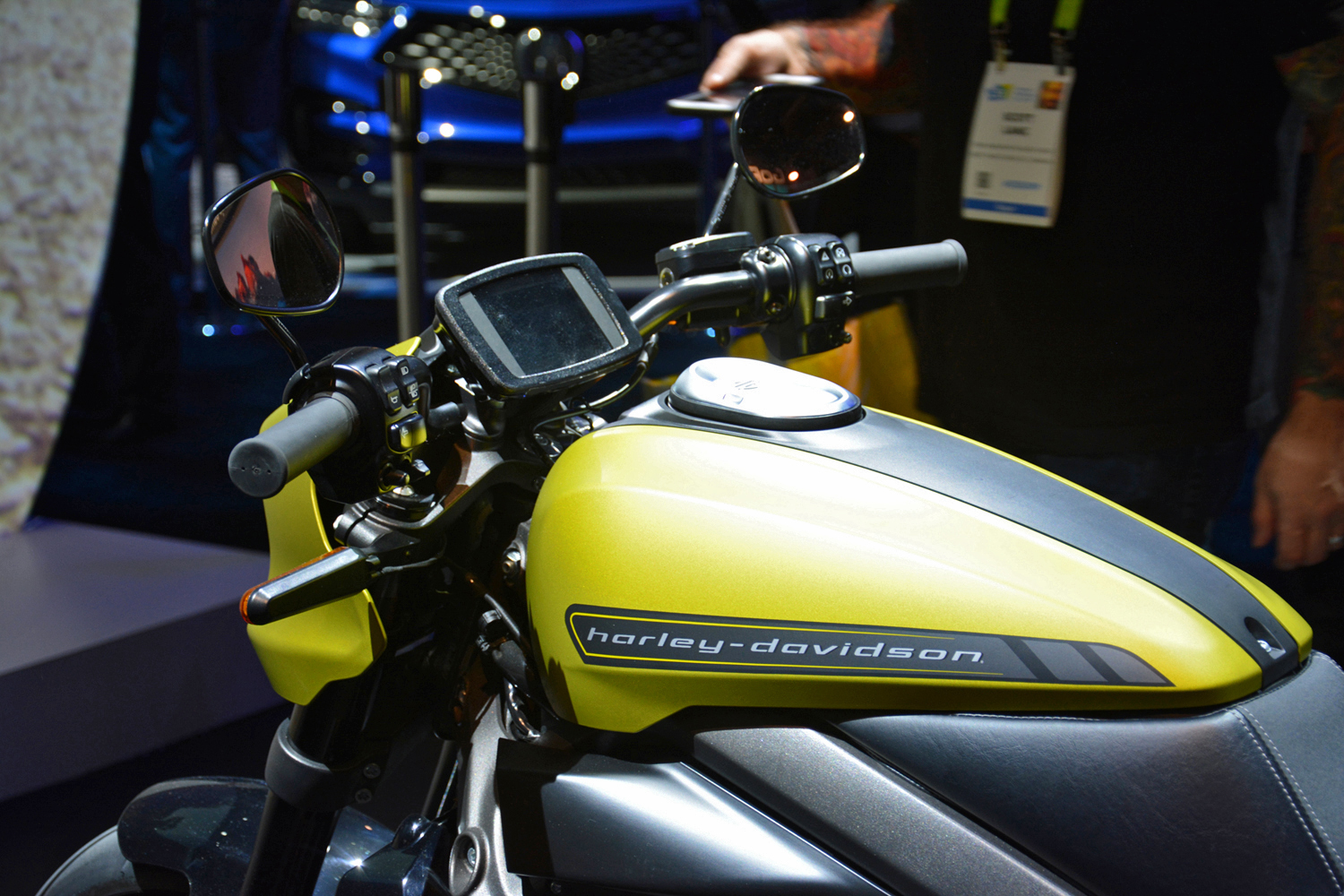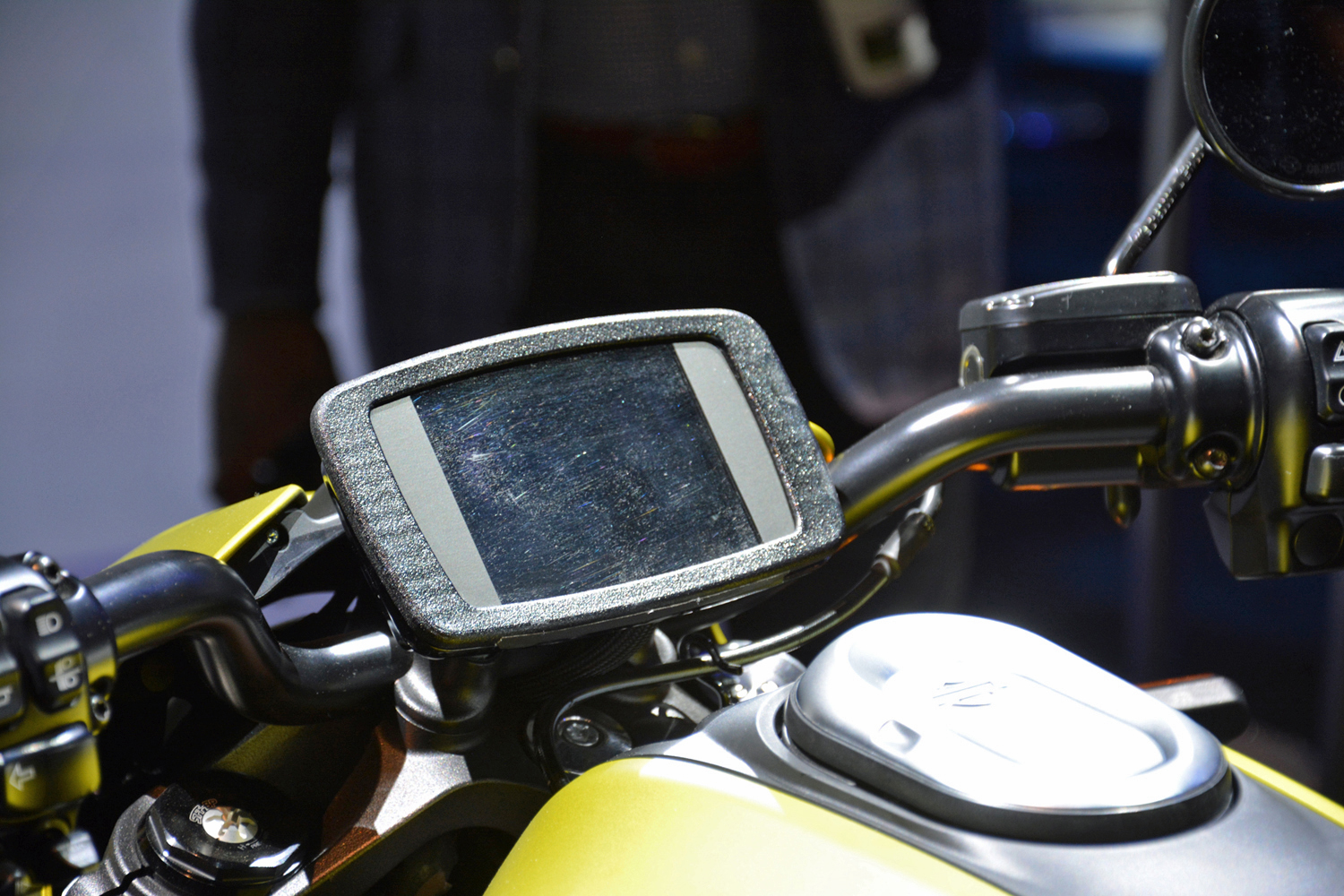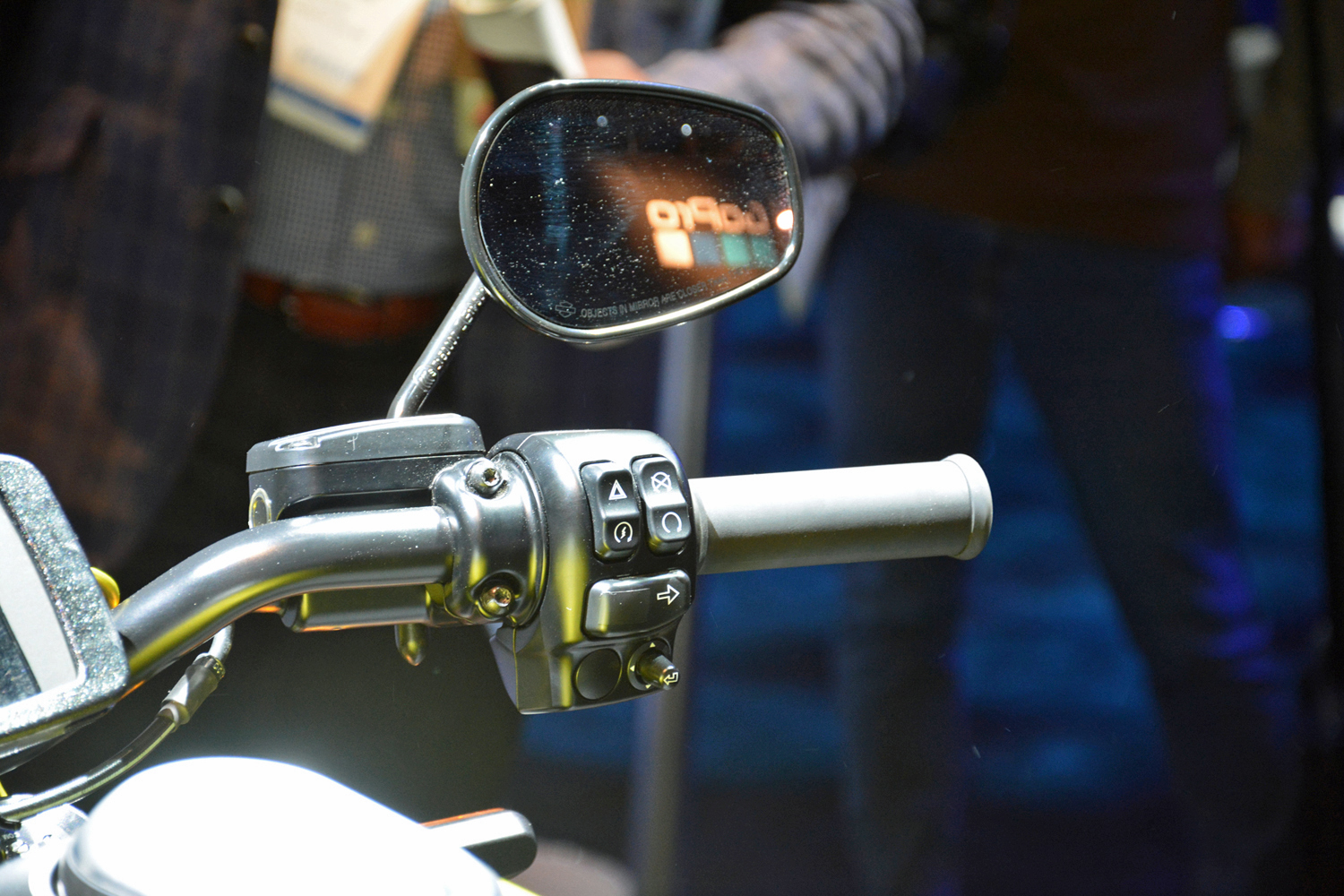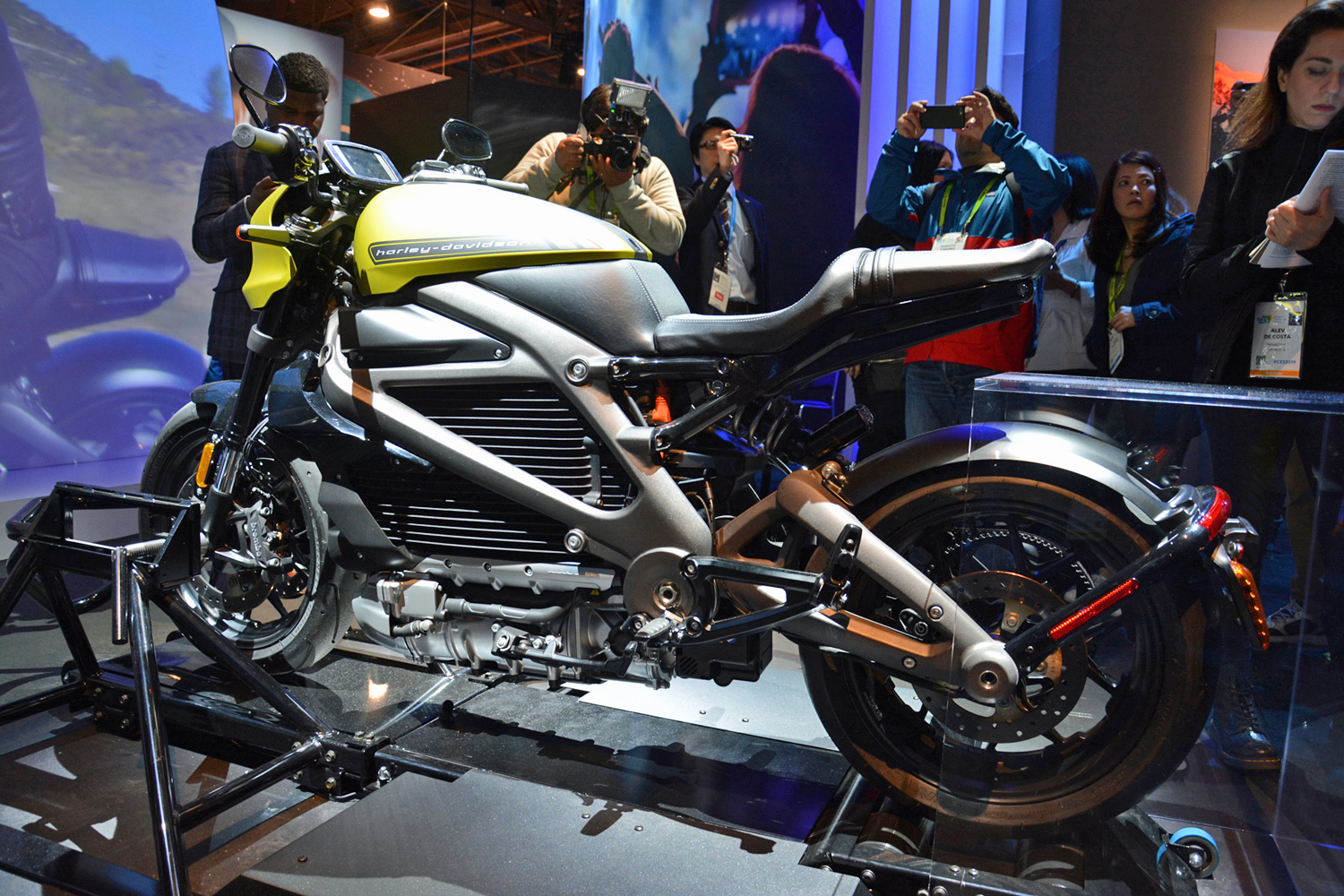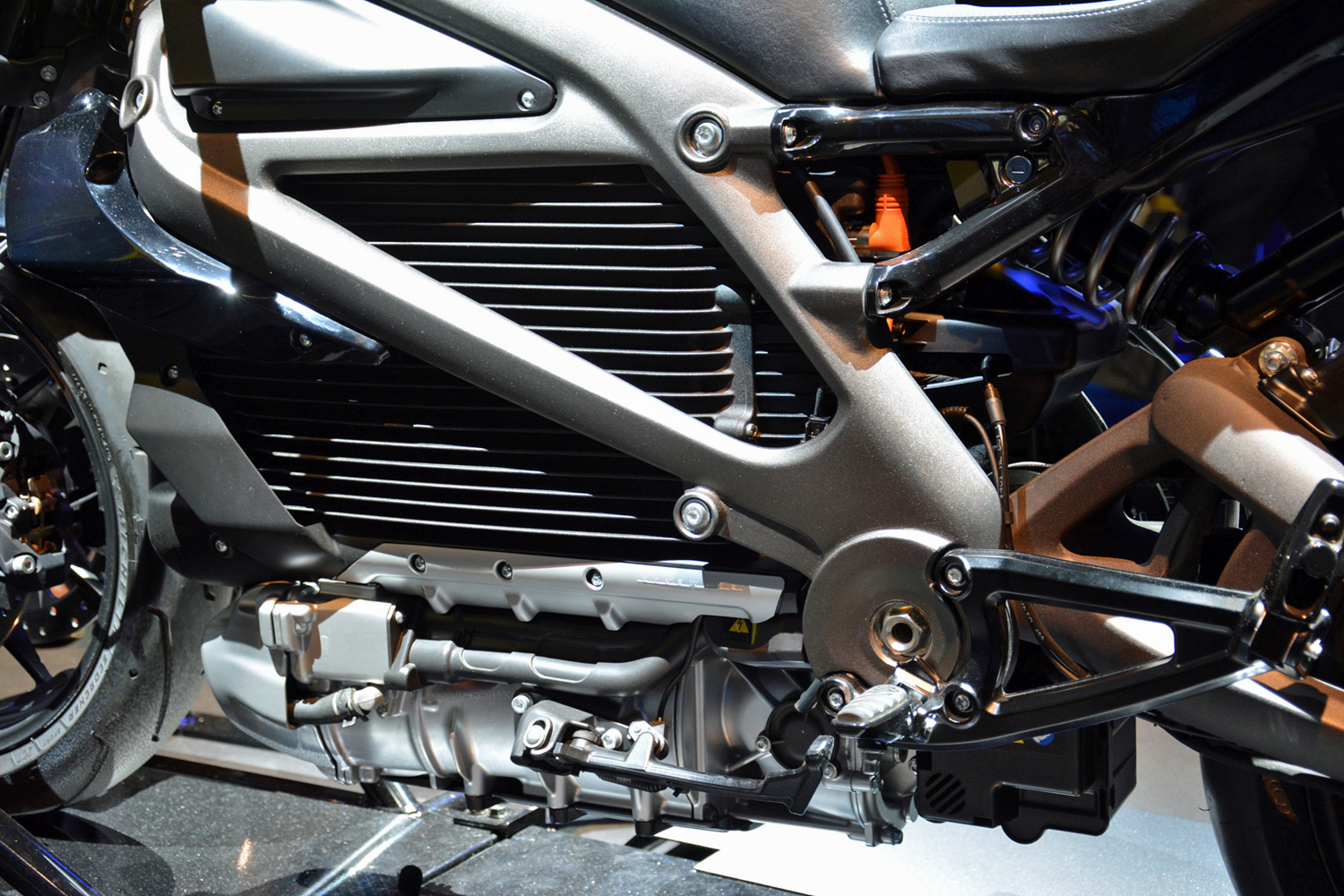The spread of electrification doesn’t stop at the boundaries of the automotive industry. Harley-Davidson announced bold plans to go electric in 2018 when it revealed the battery-powered LiveWire, and it traveled to CES 2019 to reveal additional specifications about the e-hog. Two months later, H-D announced the LiveWire’s official production range, acceleration and charging times at the Geneva International Motor Show.
More CES 2019 coverage
- Atlis emerges from stealth mode to promise an electric pickup truck
- Lamborghini packs more power into the 2020 Huracan Evo without forgetting tech
- Thousands of products show up at CES 2019. Here are the best of the best
Though purists will have a difficult time accepting a Harley without a V-twin engine, the firm did its best to convince its customers to ditch gasoline and go electric. H-D announced updated acceleration figures in Geneva. The 2019 LiveWire takes a brisk 3.0 seconds to reach 60 miles per hour from a stop. It’s an automatic, so there is no need to release a clutch or shift through gears to reach freeway speeds. Ready to pass? The LiveWire accelerates from 60 to 80 mph in 1.9 seconds.
Horsepower and torque specifications remain under wraps for the time being. Coming in higher than its original 110-mile range estimate, in Geneva, the company stated the LiveWire delivers up to 140 miles of range in an urban environment and 88 miles in combined stop-and-go and highway mileage.
The motor is a stressed component of the bike’s aluminum frame, which keeps weight down and helps with rigidity. It also lowers the center of gravity. Because Harley, like most bike manufacturers, likes to call attention to its propulsion systems, the low-hung motor has a bright cast aluminum case. Mid-mount driver foot controls and pegs will allow for semi-erect seating, although sportbike riders may angle back and use the fold-down passenger pegs instead. The narrow width bars may require more body lean in turns than wider designs.
The main battery is a lithium-ion unit within a cast-aluminum case. The fins on the battery casing are designed to help with cooling. A standard onboard level one charger can plug into any regular power outlet via an included cable (kept under the seat). Harley-Davidson says the LiveWire can also connect to level two, level three, DC fast charge (DCFC), and CCSE-IEC charging sources. Dealers who sell the LiveWire will have DCFC charging stations for public use.
Newly released charging times include 40 minutes for a zero-to-80 percent battery charge with standard DCFC and 60 minutes to charge from zero to 100 percent.
Harley developed the LiveWire’s chassis for navigating urban streets rather than highway touring. The bike has Showa adjustable suspension components front and back. Upfront, there’s a Showa SFF-BP (Separate Function Fork-Big Piston), while a Showa BFRC-lite (Balanced Free Rear Cushion-lite) shock handles the rear. In simpler terms, riders can dial in the amount of comfort or handling they want from the LiveWire. Dual-disc Brembo Monoblock brakes in front work in conjunction with standard cornering-enhanced antilock brakes and traction control systems. The bike rides on co-branded H-D/Michelin Scorcher tires. The LiveWire has seven selectable riding modes; four are factorypreset and three are customized by the rider.
A 4.2-inch color touchscreen serves up bike information and displays the infotainment system. Riders can customize the display, and a purpose-designed smartphone application called H-D Connect lets them remotely check the LiveWire’s remaining range and monitor the charging process. The app also helps users find charging stations, plus it sends alerts if it detects the bike has moved or been bumped.
Select Harley-Davidson dealerships will begin selling the LiveWire in North America and in Europe in fall 2019. Additional markets will follow in 2020. In the United States, pricing starts at approximately $30,000 before incentives are factored in. Time will tell whether lifelong Harley riders will be willing to pay Ford Mustang money to go electric. U.S. pre-orders are open now and European pre-orders will open in April.
Digital Trends crowns the LiveWire the Top Automotive Tech of CES
The Digital Trends editorial team loved the design of the LiveWire, so much so that we crowned it the best automotive tech at CES 2019. For the last few years, all eyes have been on the integration of tech into cars, but the LiveWire shows that motorcycles can evolve, too. It also helps that it’s a gorgeous bike.
Jeremy Kaplan, DT’s editor in chief, presented the Harley-Davidson team with their award and talked to them about the design of the LiveWire and what it means for the future of such a venerable American brand.
Describing the LiveWire, Harley-Davidson’s Sean Stanley said: “This is a brand-new experience in the world of motorcycling. It pays homage to where we came from, but it also creates an amazing and impressive ride out there on the road.”
Stanley pointed out that several design features on the LiveWire, such as the fins by the battery pack, are meant to pay tribute to classic Harley-Davidson designs.
“… the EV powertrain, that cylinder at the bottom,” he said, “that jewel of the motorcycle, again a nod to where we came from. That powertrain is always the jewel, and it draws your attention there. It’s certainly powerful as well; it will surprise a lot of people once we put them in their seat.”
Jim Federico, H-D’s vice president of engineering. emphasized the power of the LiveWire, saying, “once you turn that throttle, you have 100 percent of the torque available, and you feel it. This thing will do 0 to 60 in less than 3.5 seconds.” Notably, the official 3.0 seconds time to 60 is even higher.
Updated March 5, 2019, with range, speed, and charging time figures.
